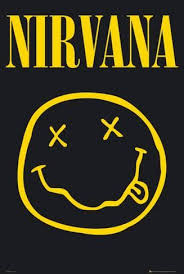Nirvana and Healthcare Architecture
Can Nirvana be described in language? There seem to be significant problems in trying to undertake this.
H. Guenther and C. Trungpa in their book “The Dawn of Tantra” describe these problems in the extract below:

 “Buddhism has always placed great emphasis on experience. The four basic axioms of Buddhism are highly experiential in character. The first is that everything is transitory; the second that everything is frustrating; the third is that everything is without essence; the fourth that nirvana is bliss. The first three axioms relate very much to our actual way of going through life. We observe life and see that nothing lasts; we feel that being faced with trying to build something on this basis is very frustrating. Then we think and we ask ourselves, “How is this? Why is this?” We get the answer that if everything is transitory it cannot have an essence; because an essence is by definition the principle by which something is what it is. If we started reasoning from the idea of an essence, we could not account for transitoriness, nor could we account for the constant frustration which we experience.
“Buddhism has always placed great emphasis on experience. The four basic axioms of Buddhism are highly experiential in character. The first is that everything is transitory; the second that everything is frustrating; the third is that everything is without essence; the fourth that nirvana is bliss. The first three axioms relate very much to our actual way of going through life. We observe life and see that nothing lasts; we feel that being faced with trying to build something on this basis is very frustrating. Then we think and we ask ourselves, “How is this? Why is this?” We get the answer that if everything is transitory it cannot have an essence; because an essence is by definition the principle by which something is what it is. If we started reasoning from the idea of an essence, we could not account for transitoriness, nor could we account for the constant frustration which we experience.

 Now the constant frustration makes us feel that some other mode of being must be possible. This is where we come to the fourth basic axiom, that nirvana is bliss. Buddha’s disciple Ananda asked him how he could make such a statement, having said that feelings and all such forms are transitory. The Buddha replied that he had qualified nirvana as bliss only by way of language, that he did not thereby mean a judgment of feeling, such as when we call something pleasant. The term he used for bliss was sukha, which is very close to what we have referred to as the peak experience. This seems to be an experience in which all conceptions and judgments, even the idea of oneself, completely pass away.
Now the constant frustration makes us feel that some other mode of being must be possible. This is where we come to the fourth basic axiom, that nirvana is bliss. Buddha’s disciple Ananda asked him how he could make such a statement, having said that feelings and all such forms are transitory. The Buddha replied that he had qualified nirvana as bliss only by way of language, that he did not thereby mean a judgment of feeling, such as when we call something pleasant. The term he used for bliss was sukha, which is very close to what we have referred to as the peak experience. This seems to be an experience in which all conceptions and judgments, even the idea of oneself, completely pass away.
So what is referred to as bliss can be understood to transcend transitoriness or permanence or any other form.”
Can Healthcare Architecture be described in language? There seem to be significant problems in trying to undertake this.
H. Varawalla and V. Hussain in their book “The Twilight of the Hospital “describe these problems in the extract below:

 “The High Priests of Healthcare Architecture (NBBJ, KMD and Mayoras & Moon) have always placed great emphasis on qualities. The four basic axioms of Healthcare Architects are highly qualitative in nature. The first is that you should not be arty-farty; the second is that everything is functional; the third is that you come to work on time and sign the muster without fail; the fourth is that Healthcare Architecture is a religion that is ascetic, suit and tieish, and corporate to the core. The first three axioms relate very much to our actual way of working in the office. We observe life and think it sucks; we feel that being faced with trying to build hospitals on this basis is very frustrating. Then we think and we ask ourselves, “How is this? Why is this?” We get the answer that we would have been happier designing hotels for Disney while working for Michael Graves. This accounts for the constant frustration we experience.
“The High Priests of Healthcare Architecture (NBBJ, KMD and Mayoras & Moon) have always placed great emphasis on qualities. The four basic axioms of Healthcare Architects are highly qualitative in nature. The first is that you should not be arty-farty; the second is that everything is functional; the third is that you come to work on time and sign the muster without fail; the fourth is that Healthcare Architecture is a religion that is ascetic, suit and tieish, and corporate to the core. The first three axioms relate very much to our actual way of working in the office. We observe life and think it sucks; we feel that being faced with trying to build hospitals on this basis is very frustrating. Then we think and we ask ourselves, “How is this? Why is this?” We get the answer that we would have been happier designing hotels for Disney while working for Michael Graves. This accounts for the constant frustration we experience.

 Now the constant frustration makes us feel that some other mode of being must be possible. This is where we come to the fourth basic axiom, that healthcare architecture is corporate. Mayoras’s disciple Moon asked him how he could make such a statement while sporting a ponytail. The Mayoras replied that he wore a ponytail only by way of being creative in his own right, that he did not mean to offend his corporate HMO clients, and that he didn’t sport a goatee too, right? The ponytail he sported did not have orange streaks, which if so would have come very close to what we have referred to as being arty-farty. This seems to be a state of being in which all hospitals and ambulatory care facilities designed, even the concept central to them, completely fail to excite.
Now the constant frustration makes us feel that some other mode of being must be possible. This is where we come to the fourth basic axiom, that healthcare architecture is corporate. Mayoras’s disciple Moon asked him how he could make such a statement while sporting a ponytail. The Mayoras replied that he wore a ponytail only by way of being creative in his own right, that he did not mean to offend his corporate HMO clients, and that he didn’t sport a goatee too, right? The ponytail he sported did not have orange streaks, which if so would have come very close to what we have referred to as being arty-farty. This seems to be a state of being in which all hospitals and ambulatory care facilities designed, even the concept central to them, completely fail to excite.
So what is referred to as Healthcare Architecture can be understood to transcend all other forms of architecture for sheer bloody-minded boredom.”
Smells Like Teen Spirit – Nirvana
The Man Who Sold The World – Nirvana
0 thoughts on “Nirvana and Healthcare Architecture”